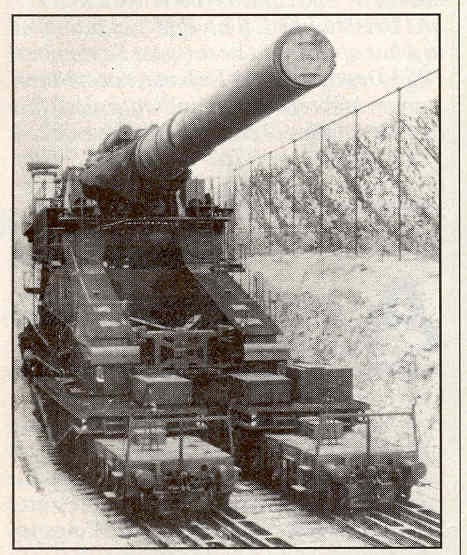 |  |  |
| Romanian Army in the Second World War · Forum Guidelines |
 Help Help
 Search Search
 Members Members
 Calendar Calendar
|
| Welcome Guest ( Log In | Register ) | Resend Validation Email |
| Pages: (2) 1 [2] ( Go to first unread post ) |    |
| mihai |
Posted: June 25, 2004 09:34 am
|
||||
|
Sublocotenent Group: Members Posts: 450 Member No.: 30 Joined: July 08, 2003 |
|
||||
| Dan Po |
Posted: October 13, 2004 09:29 pm
|
|
Sergent major Group: Members Posts: 208 Member No.: 226 Joined: February 23, 2004 |
Even I m started this topic maybe is not a problem to close it.
After 1919 the romanians use those heavy guns only as a trophy, not as an operational guns. So, they didn t have trained crews to fire with this guns, they didn t maintain them in an operational state .... so, was impossible to be used, after more than 20 years, in a battle. |
| Robert |
Posted: October 18, 2004 04:03 am
|
||
|
Soldat Group: Members Posts: 27 Member No.: 361 Joined: October 02, 2004 |
The standard guage (distance between the rails) for most western European (including Austria) and North American railways is 4 foot, 8 1/2 inches (= 143.51 cm). Russia, and later the Soviet Union used, I think, a 5 foot gage (= 152.4 cm). I'll double check on the exact Russian/Soviet railway guage. I assume that the standard Romanian guage is also 143.51 cm, so the axles on the gun carriage would have been too narrow to run on the Soviet railways unless the tracks were re-laid closer together. This would have been a massive logistical undertaking and would not have been able to be completed within the timeframe of the blitzkrieg. Also, rail guns are much heavier than a normal freight car and the tracks would need to be well ballasted in order to support the weight and recoil of the gun. (Notice how much gravel is under the rails of the "Dora" gun.) The differences in railway gauges significanly hindered the Germans' ability to move supplies east during WWII. I remember reading, (but have never seen photos) that the Germans built railway carriages with two sets of wheels (I think the wheels were designed to be exchanged when the carriage changed guage, rather than having two sets permenantly attached) and laid some track with both guages on the same rail bed. There is an interesting history to the 4 foot, 8 1/2 inch guage: When the British began building railways in the 1830's, they used the same sized axles as those used on regular horse-drawn carriages of the day - that is: 4 foot 8 1/2 inches. Horse drawn carriages in the 1830's used this standard axle size because the ruts in the road were 4 foot 8 1/2 inches apart, and the ruts in the road were that far apart because it was the amount of space that two horses' rumps occupied, when hitched side by side to a wagon. A number of the roads in Britain had been built by the Romans, and had been used to carry two-horse wide wagons since about 55 A.D., so the 4 foot 8 1/2 inch railway guage is a military spec dating from Roman times, and based on the width of two horses' rumps, that is still with us today. (Thank goodness this is the more general discussion list or Dragos would assign me to the Penal Battalion for wandering off topic for sure. Thank you for posting the photos of the rail guns. They are very interesting. Rob |
||
| dragos |
Posted: October 22, 2004 08:52 pm
|
||
 Admin Group: Admin Posts: 2397 Member No.: 2 Joined: February 11, 2003 |
I have heard from a CFR (Romanian Railroads) employee that today the process of changing the set of wheels for a train at the border when entering a country with a different gauge takes a very short time (under one hour). The wagons are lifted with a crane and the new axles are attached. However I can't imagine what cranes were necessary to lift the weight of a rail gun. |
||
| dead-cat |
Posted: October 23, 2004 07:47 am
|
||
|
Locotenent Group: Members Posts: 559 Member No.: 99 Joined: September 05, 2003 |
by dec. 1941, 15000km railroad gauge were modified to the standard 1435mm gauge, so that the regular rolling stock could be used. the "Anzio Annie" was a K5 Leopold type with a 28cm barrel. not really a " super cannon, not even by WW1 standards. the "railroad guns" in the picture were pretty much useless. too short barrel, which means a very low range. i wonder if they actually deserve the name "railroad guns" because they are not more than short howitzers or mortars mounted on a flatcar. the WW1 42cm big bertha had , with a much longer barrel, a range of only about 10-11km. for a railroad gun to be usefull, it has to supplement its limited mobility with range. the K12 could fire a 21cm shell over 120km, while the K5 had a 62km range for a 28cm shell. This post has been edited by dead-cat on October 23, 2004 09:44 am |
||
| BALLY |
Posted: April 16, 2008 09:14 am
|
||||
|
Soldat Group: Members Posts: 16 Member No.: 655 Joined: August 26, 2005 |
At one time, the perimeter of this mega cannon war patrolled by two Romanian companies, in Crimea... http://www.aopt91.dsl.pipex.com/railgun/Co...ora%20index.htm |
||||
0 User(s) are reading this topic (0 Guests and 0 Anonymous Users)
0 Members:
 Pages: (2) 1 [2]
Pages: (2) 1 [2] |
   |
[ Script Execution time: 0.0119 ] [ 15 queries used ] [ GZIP Enabled ]
Powered by Invision Power Board(U) v1.3.1 Final © 2003 IPS, Inc.








